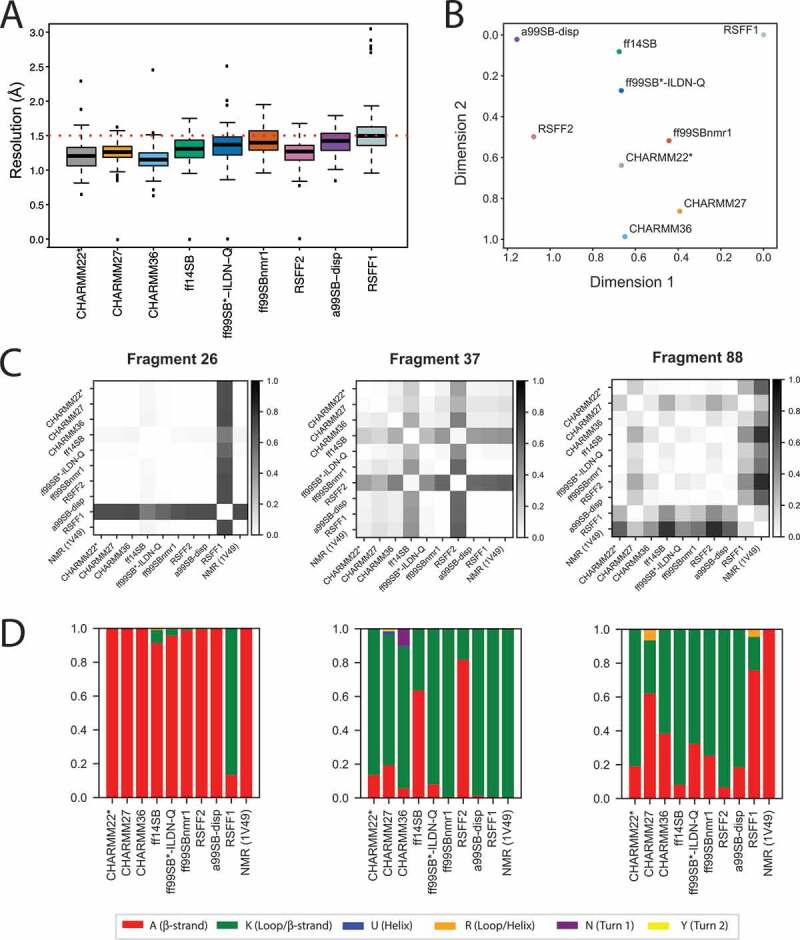Figure 1.

Comparison of MD ensembles of LC3B. (A) Prediction of structural resolution values for different MD ensembles of LC3B generated using different force fields. All the MD force fields generally refine the structure to a resolution close to an X-ray structure deposited in the entry 3VTU and are in reasonable agreement with each other according to this parameter. The only (not pronounced) differences are observed for RSFF1, ff99SBnmr1, and a99SB-disp, according to the statistical test reported in Table S1. (B) Comparison of MD ensembles from different force fields using the clustering-based ensemble similarity (CES) method implemented in ENCORE. The two-dimensional plot for the clustering of the of the ten force field ensembles is based on the pairwise similarities calculated by CES using the tree preserving embedding method. The higher the distance between two force-fields is in the plot, the more different the sampling was between the respective simulations. The corresponding heatmap is provided in Figure S2. The analysis shows that RSFF1, RSFF2 and a99SB-disp were the ensembles more distant from the others. (C and D) These figures showcase the results obtained with the reduced structural alphabet (SA) method for three different SA fragments as representative example (i.e., fragments 26,37 and 88). The full datasets are available in the GitHub repository. Here, independently for each fragment, we have calculated the frequency of each letter in each force-field simulation, as shown in panel D. The frequencies of the samples have been used as an estimate of the underlying probability distributions and compared using the Jensen-Shannon divergence (dJS) between each pair of simulations, as shown in panel C. Higher values in this plot mean a more different sampling of SA letters between a given pair of force fields for a specific fragment
